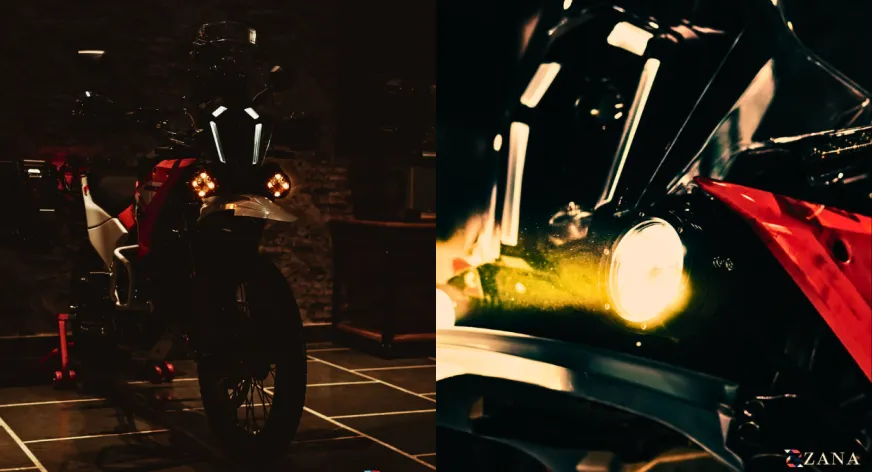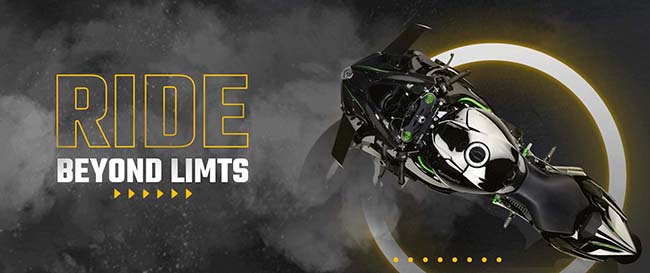
What does really matter ?
Aux Lights -Lumens, Watt, Drivers etc - What does really matter ?
We’ve seen the ads. We’ve heard the hype. “50W! 5000 Lumens! Dual Color!”
Out on the Manali-Leh highway, none of that matters when your light fogs up or blows a fuse halfway to Tanglang La.
This isn’t about specs on a sticker. This is about real-world riding. About lights that cut through Himalayan fog, deflect rain at 100km/h, and don’t flinch when the terrain gets punishing. This is about auxiliary lights that work—not just look good. At ZANA, we’ve built, tested, and broken more aux lights than most brands care to admit. And we’ve learned this the hard way:
There’s science. And then there’s survival. Here’s how to separate marketing fluff from real function.
1. Understanding the Tech: Watt, Volt, Ampere, Lumen, Candela, Lux
Before you choose a light, you need to speak its language.
1.1 Volt (V)
The electrical potential. All motorcycle lights should run at 12V (If your batttery is other than 12 V then light should match the voltage ) to match your battery. Anything higher or lower and your wiring is in danger.
1.2 Watt (W)
The power consumed. More watts doesn’t always mean brighter. It just means it’s pulling more juice—good if paired with efficiency, bad if it’s just heat.
1.3 Ampere (A)
The current drawn. A 50W light at 12V draws ~4.2A. That’s a heavy load for your electrical system if you're running multiple devices. Know your fuse limits.
1.4 Lumens (lm)
Total light output. 5000 lumens is high—but it must be measured at source, not inflated. Some brands lie. Trust only verified lumen ratings are from proper photometric labs.
1.5 Candela (cd)
Intensity in a particular direction. A 1000-lumen spot with high candela is more useful than a 5000-lumen flood that scatters.
1.6 Lux (lx)
Usable light at a given distance. 1 lux = 1 lumen per square meter. This is the most important stat. 10 lux at 100m is useful. 1000 lumens with 1 lux at 20m is garbage.
2. Lens Material: Glass vs Plastic
2.1 Glass
Doesn’t yellow or scratch easily. Resists heat better Found in premium brands like Baja Designs, Denali, and ZANA and some others Heavier but more durable
2.2 Plastic (Polycarbonate)
Lighter, cheaper. Scratches faster. Yellows over time under UV. May melt under prolonged heat (we’ve seen this near Pangong)
Verdict: Glass wins. Especially in hot, high-altitude conditions where UV and heat wreak havoc.
3. The Heart of the Light: LED Driver Chips
A light is only as smart as its driver. Here's what we’ve found:
Top LED Driver Brands Worldwide:
Osram (used in ZANA ZFL Gold series. Osram is a superior driver than Cree, Lumileds (Philips), Samsung, Nichia
Why it matters:
The driver controls brightness, heat response, and dual-color switching. A bad chip can flicker, fail, or burn out fast.
ZANA chose Osram for a reason—it delivers stable power across temp swings from -10°C to 45°C.
4. Heat Dissipation: Thermistor, Sink, or Nothing?
Good lights manage heat like high-performance engines. Sans a heat sink, thermistor or fan cooled the lights will get too hot to function and eventually melt. Quality of the heat sink is of course paramount - So next time go ahead touch a Zana gold series light and see how cool it is !
4.1 Thermistors
Sense heat and reduce brightness to prevent burnout. Only found in advanced units.
4.2 Heat Sinks
Passive fins that dissipate heat. Look for full-aluminum back plates with wide surface area—not decorative plastic fins.
4.3 Fan-Cooled Lights
Rare and noisy. Overkill for bikes. Not weatherproof.
4.4 No Cooling
Cheap lights with sealed plastic backs = death trap.
Verdict: Go for metal-bodied, finned heat sinks + thermistor combo. ZANA ZFL- Gold series uses both
5. Housing: Metal vs Plastic
5.1 Metal (Aluminum Alloy or SS)
Dissipates heat. Stands up to drops. Doesn’t deform in sun or cold. Lasts longer
5.2 Plastic (ABS or Poly) Cheaper, lighter. Cracks under vibration or cold. Can melt near engine heat
Verdict: Metal wins every time. It’s not just protection—it’s longevity.
6. Body Shape: Round vs Square vs Oval
Round Lights
Best for spot beams. Easier to focus. Traditional ADV setup
Square or Rectangular Lights
Better for flood patterns and combo patterns. More expensive to make and buy . Look more aggressive. Tuning and angle of drivers are crucial - Advised to buy only from reputed brands or of course the Zana Gold series
Oval (Combo Beams)
Offer both spot + flood in one housing. Great for highway + trail use
Verdict: It depends on where you ride.
Spot + Flood Combo for Himalayan and Spiti
Flood Dominant for urban/short touring
Spot Only if you already have a wide OEM spread
7. Mounting Hardware: It Matters More Than You Think
A good light with a bad mount is a liability. Look for: Stainless steel brackets. Rubber dampeners. Anti-vibration clamps. Locking washers
ZANA’s aux lights come with powder-coated steel mounts that don’t flex or rattle.
Why Choose ZANA Auxiliary Lights?
Because when everything else fails—your light shouldn’t.
ZANA auxiliary lights aren’t designed to look cool on Instagram. They’re built for fog, rain, snow, dust, potholes, voltage spikes, drop tests, and 14-hour rides. From our ZFL / Gold Series, this is battle-tested tech made for riders, not spec sheets.
3000 to 23,000 Lumens
Light Output That Matches Your Ride, Not Just Your Budget
Need compact throw for urban commutes? We’ve got it.
Need a blinding 23,000-lumen highway flood for cross-state touring? We’ve got that too.
All ZANA lights are photometrically tested, not copy-pasted from supplier PDFs.
And more importantly, we don’t just chase brightness.
We build for usable light—that means proper throw, spread, and lux where it counts.
Yellow + White in One Light
White for Open Roads. Yellow for When the Road Disappears.
We don’t call it amber—because no rider does.
This is true yellow mode, built for:
Foggy mountain passes Monsoon white-outs. Dusty trails with zero visibility. Switch instantly to bright white when conditions clear.
Every ZANA ZFL/ Gold series light use Bluetooth switches—so your hands stay where they belong: on the bars.CNC-Machined Full-Metal Body Heat Dissipation, Impact Protection, Zero Buzz
ZANA lights have - Deep-cut heat sinks to manage temperature on long rides
Metal bodies that don’t melt, crack, or deform
Solid mount stability—no rattle, no vibration, no nonsense
Drop the bike? The light survives.
High heat at idle? The body cools itself.
Rain, snow, highway blasts? It doesn’t care.
Osram LED Driver Chips
Stable Power. No Flicker. No Failure.
The LED driver chip is the brain of your light. Most cheap brands use random boards.
ZANA uses Osram—one of the most trusted lighting platforms in the world.
Why it matters: Constant voltage regulation prevents flicker or dimming under load
Dedicated Harness + Bluetooth Switch - Plug and play. No Jugaad
Heat-protected switching means dual colour modes won’t burn out - Surge-resistant internals safeguard against battery spikes and stator fluctuations. It’s the difference between a light that just switches on—and one that stays on through chaos
Blade fuse + relay
Heat-shielded cables. Factory-sealed joints
ZANA aux lights are mounted on:
Interceptor 650s in Ladakh
Tiger 900 Rallys in the Sahyadris
Classic 350s dodging cattle in UP fog
BMWs doing France, Germany, and Sikkim in the same season
These aren’t decorative accessories.
They’re trust anchors for riders who go far—and don’t want to stop for a dead light.
And if anything ever does go wrong? Call ZANA. No excuses. No runarounds. No imported ghosts.
The Final Word
This isn’t about specs. It’s about confidence.
Confidence that your light won’t flicker when it rains
Confidence that your yellow beam will punch through mist
Confidence that your switch will respond every time
Confidence that when your stock headlamp gives up, ZANA won’t
ZANA Auxiliary Lights. 3000 to 23,000 Lumens. Yellow + White. Bluetooth-Ready. Osram-Powered.
Built to Survive. Forged in Fire. More Than Metal.











